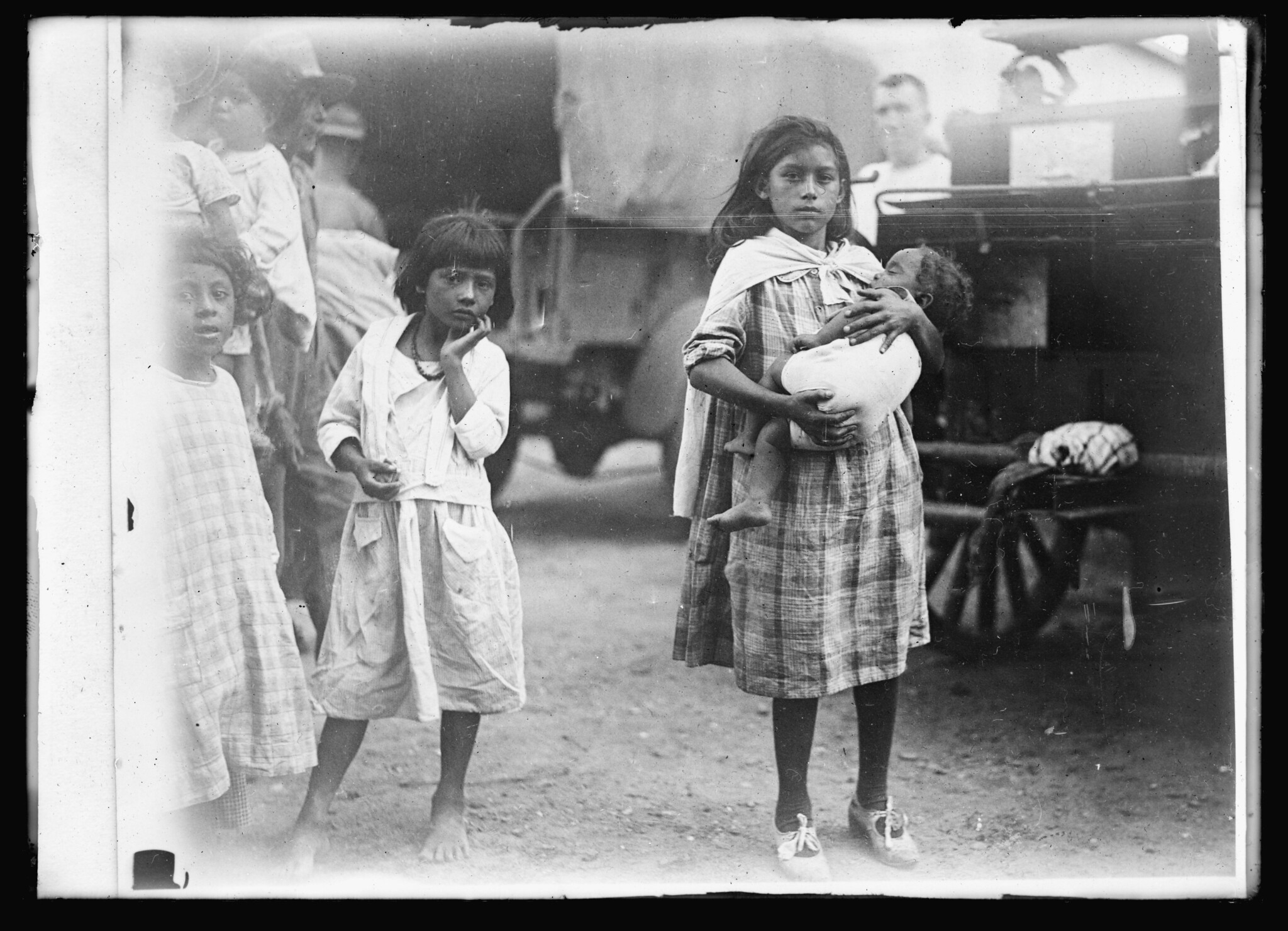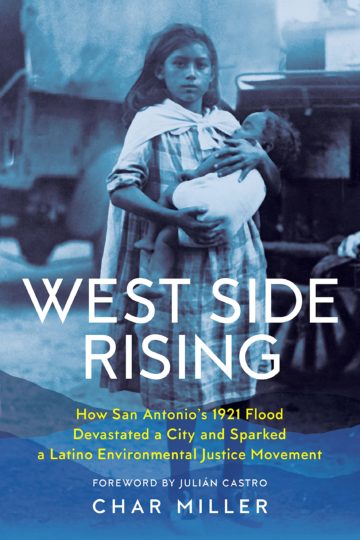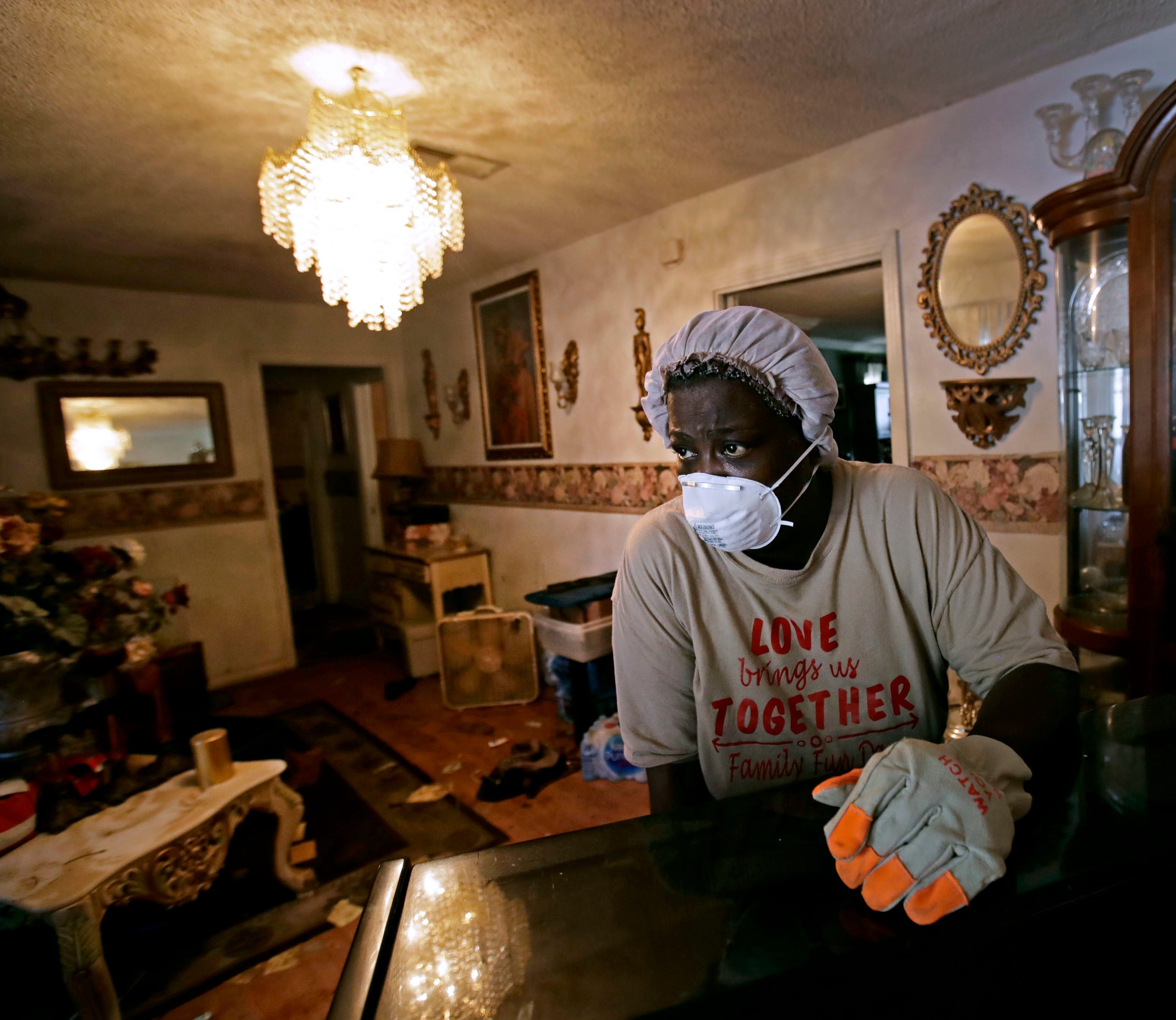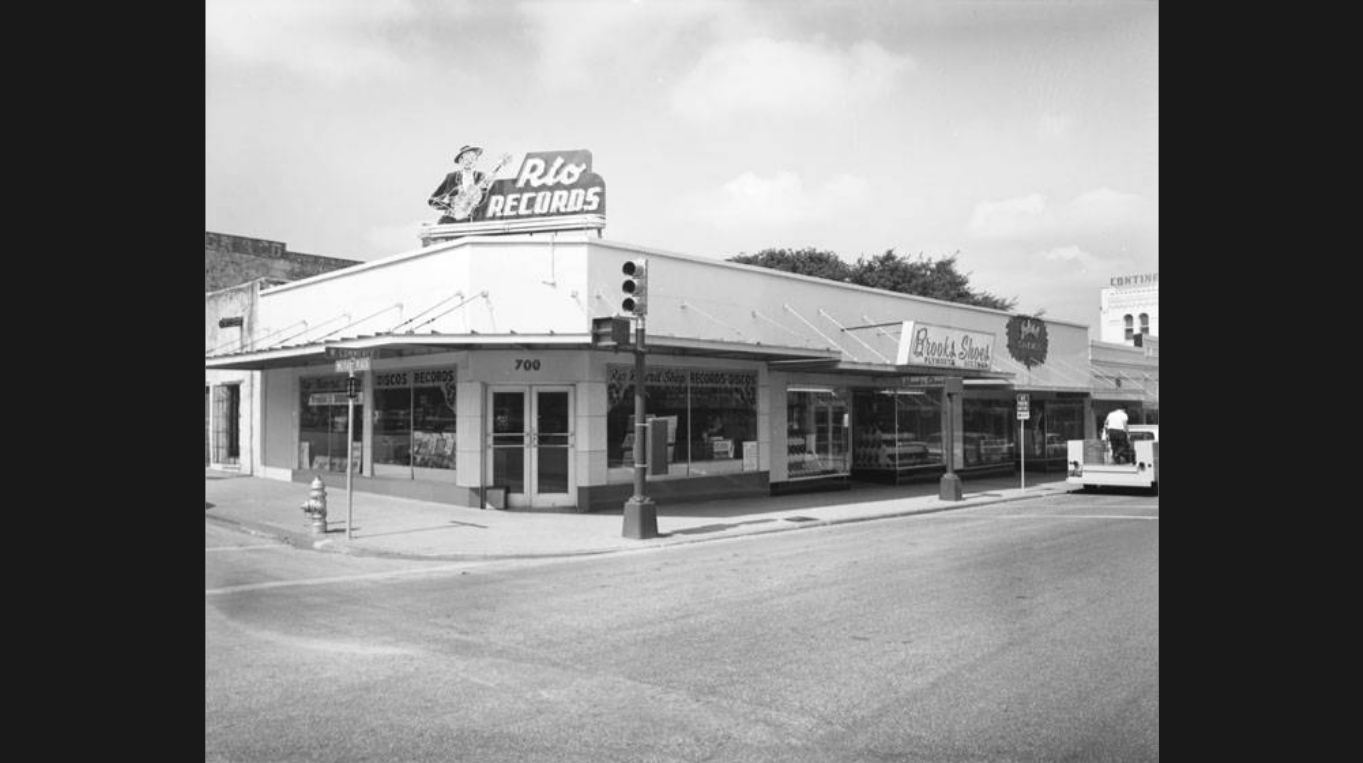
One Hundred Years Ago, A Flood Reshaped San Antonio. A New Book Shows How Little Has Changed.
Char Miller’s 'West Side Rising’ delves into the man-made side of the 1921 flood.

In September 1921, a Category 1 hurricane crashed into the Gulf Coast, pushing nearly three feet of rain all the way into Central and South Texas over just a few days. The San Antonio River swelled above its banks, submerging the city’s urban core and causing millions of dollars in damage. And on San Antonio’s West Side, where a majority of the city’s Mexican-American population lived, creeks and other small waterways were transformed into rushing walls of water that swept poorly constructed houses off their foundations. At least 224 people died in San Antonio, and most of them Mexican-American.
Despite the disproportionate damage to the city’s West Side, most of the recovery money was funneled to the city’s wealthiest corners. West Side residents were more or less left to fend for themselves as they recovered from the storm and looked to protect themselves against future storms. This disparity is the focus of Char Miller’s new book, West Side Rising: How San Antonio’s 1921 Flood Devastated a City and Sparked a Latino Environmental Justice Movement. Miller, a former history professor at Trinity University in San Antonio, chronicles how both before and after the storm, city leaders made a series of decisions that created the disparity in damage and death. The book shines when Miller expertly explains how the “natural” disasters that afflict Texas and other states aren’t really all that natural. The disaster unfolds when a natural phenomenon collides with the homes and streets we’ve built and maintained in precarious places: along the banks of a river, or on top of a shifting plate boundary. Events such as the 1921 flood often deepen the undercurrents of racism and classism where they hit. Who gets help? Who is left behind? We learn that those decisions are left entirely to human judgement.
Miller shows how these currents played out in 1921 by relying on long overlooked first-hand accounts, records, and reports from the West Side to fill in gaps in the existing narrative of the flood. The 1921 storm was the city’s deadliest disaster, and it finally convinced San Antonio officials and taxpayers that disaster prevention—new dams and expensive engineering projects—was worth the cost. The city secured bonds to undertake the projects, but the reader is left to wonder just how well the city’s infrastructure will fare as climate change increases the frequency and viciousness of storms. In a book that scrupulously details how human systems have exacerbated natural disasters, it’s a glaring omission: Climate change is perhaps the most apt example of the phenomenon.

Still, Miller does a good job of comparing the disparate impacts of the flood on the city’s working class, immigrant community, as the wealthy, white elite emerges relatively unscathed. News reports from the time catalogued at length the property that the city’s elite had lost, and the upscale hotels, shops and offices that had been destroyed downtown. “The flood could not have been more respectful of the well-heeled,” Miller writes. “They may have lost things, even a good many of them, but their families did not vanish beneath turbulent waters; their neighborhoods were not erased.” When those same newspapers reported on deaths from the West Side, there was little attempt to identify the deceased or give them proper obituaries.
Before the storm hit, San Antonio was a deeply segregated city where Mexican-Americans were forced to stay on the West Side. Slumlords owned most of the housing there; it was shoddily constructed, had few amenities, and subpar sanitation. Outbreaks of tuberculosis and yellow fever were not uncommon. Hispanic residents couldn’t purchase homes on higher ground elsewhere in the city, as many white families had done after previous floods.
In newspaper accounts from the time, survivors on the West Side told reporters that while that year’s flood was devastating, it wasn’t anything new. “Every time it rained, roads turned thick, and if the deluge was heavy enough, creeks leaped out of their banks, running through the thickly settled barrio,” Miller writes. Smaller floods preceding the 1921 storm had killed at least a dozen West Side residents.
In the 1920s, no coordinated government agencies existed to bring financial aid, supplies, and workers to help rebuild the city. Disaster-stricken areas relied on charitable organizations such as the American Red Cross, which brought in much needed cash assistance, volunteers and supplies like tents and food for people who lost everything in the flood. The aid was essential for West Side residents who had little access to savings or loans to rebuild homes and businesses. But the city discouraged residents from taking aid because of the stigma associated with it; to make matters worse, officials decided to rebuild houses in the neighborhood as cheaply as possible, with little regard for the quality of construction. “A great many of the houses that were utterly ruined were valueless anyway,” one city official said at the time. “It is impossible to rehabilitate as before the flood, because it would not be fair on the donors of the money itself.” In other words: The homes and lives of West Siders were hardly worth the philanthropic efforts.
By 1926, city officials drummed up enough support for the Olmos Dam and a river-straightening project that would reduce flood risks. But the money was concentrated downtown, where the city’s elite lived. Floods continue to wreak havoc in the West Side for decades longer.
Miller’s narrative focuses heavily on the systemic issues that left many Latino residents behind, but he takes care not to portray the city’s ethnic minority as simple victims. Although it’s relegated to just one chapter, the book delves into Latinx activism for adequate flood control. Community-led activism in the West Side propelled Henry B. Gonzales, Texas’ first Hispanic congressman, into national politics: Gonzalez grew up on the West Side and used his position to bring attention and federal dollars there.
Political phenoms Julian and Joaquin Castro also launched their political careers from the West Side. In the introduction to Miller’s book, Julian Castro, Julian Castro, a former mayor of San Antonio who later served as the Obama administration’ Secretary of Housing and Urban Development, recalls the city’s flooding issues in the 2000s. Homeowners in the West Side would show him the water pooling in their kitchens or garages and plead for help. “They had been waiting decades for the city government to fix the drainage problem on their streets… . Twenty years later, in 2021, I have no doubt many are waiting still.”
Some homeowners in the West Side received buyout offers from the local flood control district. In theory, this program is supposed to help move families out of severely flood-prone areas and move into safer neighborhoods. But in practice, it splits up communities with long-established roots; some households struggle to find affordable housing within the city due to gentrification. Miller doesn’t dwell on how the program has played out in recent years. Neither has local media, at least for the most part: There’s been little coverage of how relocation affects communities in the area. The voices of community members, then and now, are rarely elevated in discussion about the future of the city’s physical and social landscape.
This is what environmental scholar Rob Nixon has called “slow violence,” referring to the disasters that take centuries to unfold, beating down society’s most vulnerable. Leaning on Nixon’s framework in San Antonio, Miller makes a compelling case: The flood that occurred 100 years ago reveals a much broader—and enduring—problem. The city still floods, and it still floods unequally.



